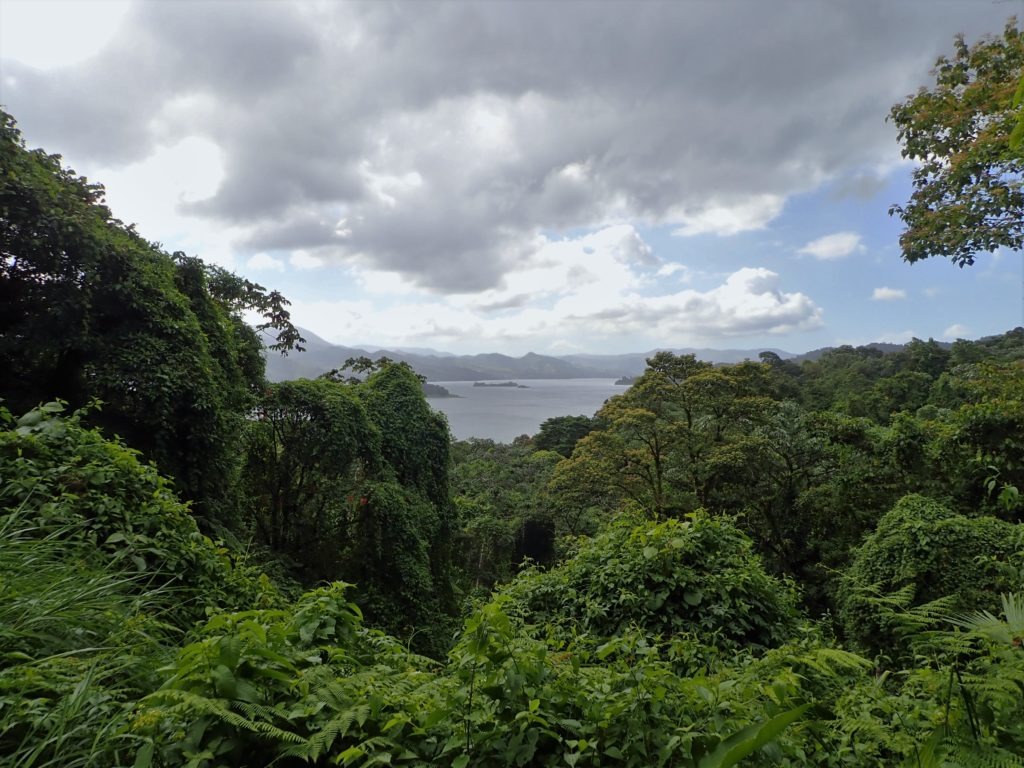
We explored Costa Rica for two weeks during Christmas time with a four wheel drive. Below are our tips and itinerary to visit this beautiful country with its fascinating nature and wildlife.
The road trip in Costa Rica
San José, Costa Rica’s capital (1 night)
We arrived at San José in the evening on a flight from Cancún.
We took advantage of our host’s hospitality to discover local Christmas customs. Indeed, Olga is an extremely caring host who invited us to spend Christmas Eve with her family. We met her parents who introduced us to Costa Rican Christmas magic! The house was worthy of a true Christmas decoration museum and the meal was succulent! We highly recommend her place! Find her accommodation on Airbnb at the following address: https://www.airbnb.com/rooms/24266060 and if you want to benefit from a discount for your first booking on Airbnb, check out our tips and discounts page.
The next day we meet with Nicolas’ parents and spend Christmas day with family. We went for a walk in La Sabana park, San José equivalent of Central Park, which was really busy with families on picnics and activities of all kind (horse riding, food, etc.). We could not visit much more in the city as it was a holiday but we did more at the end. We then picked up our car and set off for 12 days of epic road trip!
The Pacific Coast and Manuel Antonio Park (2 nights)
106 miles / 3h on the road
First destination was the Manuel Antonio National Park. The road to the park is easy and runs along the Pacific Ocean. A delight to enjoy your first sunset on the ocean. We spent 2 nights by the park in order to get to the entrance early in the morning. Indeed, the park is very popular and entries are limited so plan to arrive early. We chose the guided tour (offered at the entrance) and we highly recommend it. First it will allow you to cut the queue. Above all, thanks to our guide, we observed a breathtaking number of animals we would not have seen on our own. For example, our guide was able to spot a multicoloured grasshopper 3 meters away and we could enjoy the powerful binoculars.
In the park, bring sunscreen and a swimsuit. You will see howler monkeys, squirrel monkeys and capuchin monkeys, two and three fingered sloths, bats, raccoons, deers, crabs, agoutis, iguanas and more. At the end of the guided tour, we were “abandoned” on the paradise of the beach Playa Manuel Antonio. We had planned a picnic there but the monkeys bothered us and helped themselves into our lunch. Be careful because the raccoons are also very curious. We then explored the park on our own for a few extra hours. Count $ 16 for the park entrance and $ 15 per person for a guide (using Clémentine’s negotiation skills).
Despite its popularity, the Playa Manuel Antonio was the best beach we visited and we spent several hours bathing in the hot water, relaxing in the sun, watching the monkeys, iguanas and raccoons. The setting is simply heavenly.
Monteverde and the biological reserve (2 nights)
118 miles/ 3h30 on the road
We took the road to Monteverde from Manuel Antonio Park. On the road we stopped at the Carara National Park to make a small boat trip on Taracoles River estuary to observe birds and crocodiles. We saw a lot of birds and some crocodiles, it was also very impressive to see the mangrove. There is a large choice of tours and we booked with Crocodile Man Tour The Original. Count $ 30 per person. In addition, you can cool off at the restaurant with coffee and water but we do not recommend eating there. We also enjoyed the guarded parking while we had all our luggages in the car.
After this we drove for a few minutes to stop on the bridge crossing the Taracoles river. From there we have been able to observe about twenty very large crocodiles on the river banks. It is very impressive ! We took turns to keep an eye on the car in the parking lot.
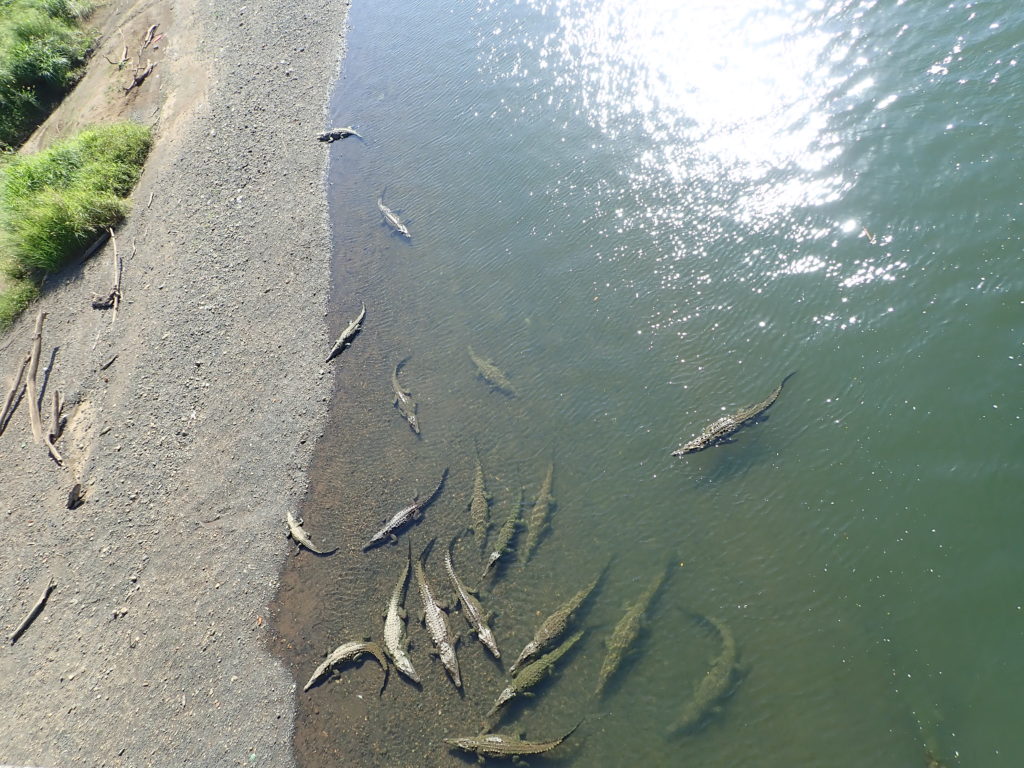
Finally, we finished driving to Monteverde by accessing the road / track 606. We understand why it is advised to rent a four wheel drive, the road is not good.
The main attraction of Monteverde is its biological reserve, also called the cloud forest. We visited it the day after our arrival. Plan to come early because the number of people in the park is limited to 160. We arrived at 8 am and had to wait until 9:30 am being 11th on the waiting list. We thought the park was opening at 8 am (as read in our guide) but it is now 7 am. The park is small but beautiful. We observed the lush and very dense nature as well as the animals and birds. We spent the day there and covered almost all 8 miles of well maintained trails. We have, among other things, reached the continental division point with a magnificent view of the Pacific Ocean on one side and clouds on the other side. It is said that a water drop falling on the east of the line will reach the Atlantic Ocean and a water drop falling on the west will join the Pacific Ocean. Finally, do not miss crossing the suspension bridge which will take you over trees and jungle.
La Fortuna and Arenal volcano (2 nights)
78 miles / 3h30 on the road
A very short route in distance but very long in time. Indeed, our next destination, the Arenal volcano Park is 25km as the crow flies but we had to get around the Arenal artificial lagoon. There are many unpaved roads from Monteverde and it is very slow. However, we have seen beautiful mountains and many birds (including toucans). Once past the mountain, we drove along the beautiful and very windy Arenal lagoon. We finally reached our accomodation at Ivan and Ivania.
After dropping our luggage, we went for a swim in El Chollin hot springs. Although it was not recommended by our host due to regular robbery (to avoid at night especially), we had a relaxing time with the many locals and tourists in this thermal river naturally at 35 °C / 90 °F. The main advantage of this activity is the price (free!), but because of the excessive number of people we found there was a lot of garbage on the river banks. It is also possible to stop in one of the many hotel & spa facilities (relatively expensive) using these hot water springs. After this we also swam in the cold (or rather non-thermal) waters of Del Salto – Río Fortuna. You can have fun jumping in the water there with a rope.
The next day we headed to the Arenal Volcano National Park. For $ 15 per person we had access to two parks. We had the chance to see many birds in a big tree at the end of the trail after the main car park. We also climbed the 1992 lava flow. From there, we had a view of the Arenal volcano which unfortunately did not want to fully reveal itself. For the second part of the park, the Peninsula sector, we went down a well-maintained pedestrian path to the lagoon. A small loop also allowed us to sink into the jungle and pass over a suspension bridge just above the treetops.
Once the walks ended we went to La Fortuna waterfall. Also count $ 15 per person entrance fee. We went down the 500 steps (you will come across zip-lining tourists and maybe howler monkeys) leanding to this impressive waterfall. We were able to bathe at the bottom of this 246 feet high waterfall. The water is cold but the scenery is worth the detour. It is also the perfect place to relax after a day of hiking. Allow at least 1h30 / 2h to enjoy the butterfly garden and the orchid walk.
Cahuita and the Caribbean coast (4 days)
158 miles / 4h on the road
We took the road early between Fortuna and Cahuita to join our home at Troy’s. A superb house (however more expensive than our other accommodations) ideal for 4 or 5 people who wish to spend time between beaches and visits. We booked 4 nights in the same accommodation to explore this part of the Caribbean coast in depth and spend New Year’s Eve in the small town of Cahuita. A good atmosphere, rather quiet, with many fireworks.
The next day we visited Cahuita National Park. Great surprise, the entry is a donation! We went for a walk in the jungle at the seaside. Once again we saw many animals in their natural habitat: sloths, howler monkeys, toucans, pelicans, spiders, hermit crabs… the more we went into the park the more deserted were the beaches. Be careful to swim only in places marked with a green flag because the current is strong and the waves are high.
The next day, on our host recommendation, we went to the Jaguar Rescue Center. A great opportunity to see rescued animals (mostly orphans) before their reintroduction into their natural habitat. It is possible to visit the centre with group tours at 9:30 or 11:30 for $ 20 per person. It is also possible to do private tours. The tours are done by the volunteers. The centre has no government assistance and has received more than 600 animals in 2018. You will observe only a tiny part of the animals, those for which the centre is certain your presence will not be harmful.
Become a volunteer at the Jaguar Rescue Center in Costa Rica
If you want to volunteer in Costa Rica and love animals, the Jaguar Rescue Center is looking for volunteers. The only conditions to be a candidate are to be over 18 years old and to stay for 1 month minimum. The cost of volunteering is $ 300. We were very tempted to volunteer unfortunately we did not have enough time. More information on their website: http://www.jaguarrescue.foundation/.
We then enjoyed the rest of the day visiting Manzanillo and Puerto Viejo where we ate at Soda Lidia’s Place, a typical Caribbean restaurant. We recommend the chicken, a delight! Unfortunately, the bad weather prevented us from enjoying all the heavenly beaches. We still took a moment to watch the many surfers in action.
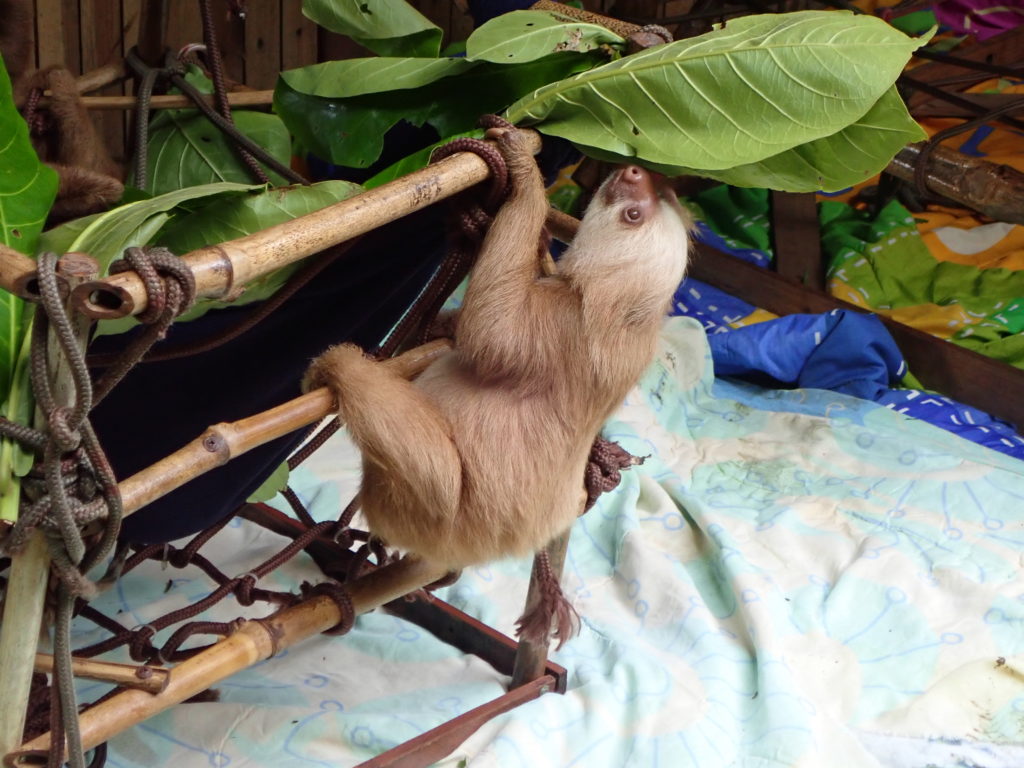
On our last day in Cahuita we enjoyed Playa Negra, a black sand beach, and our last bath in the Caribbean sea. Do not plan to swim much on this part of the coast because the waves are very powerful despite the coral reef not so far away. The bathing experience is however very fun and it is a dreamed location for the surfers. For lunch, we ate at the restaurant Sobre Las Olas and finally tasted the long awaited ceviche. The setting offered by the restaurant is also amazing and we had a table by the sea directly on the sand and a few feet from the waves.
Irazú volcano (2 nights)
109 miles / 3h30 on the road
We then headed to Cartago’s direction to visit the Irazú volcano. Our accommodation was a charming chalet located in the mountains 18 miles east of Cartago. Be aware, access to the cottage is very difficult. If you do not have a four wheel drive we advise you to look for something else. We took advantage of arriving early in the afternoon to hike in the mountains. Here it is colder and we wore our sweaters in the evening and enjoyed the fireplace. Mountain atmosphere guaranteed!
The next day, we got up early to arrive at Irazú Volcano Park opening. Despite the 33 small miles separating us from our destination, we had 1 hour drive. We arrived a few minutes after the opening and had to wait fifteen minutes to get our tickets ($ 15 per person and $ 3 for parking). At our exit around 11 am, the waiting time was much longer and cars were queuing. The car park is located a few hundred feet from the main crater and all views are accessible by car. Nothing to excite your explorer / hiker soul! However, the crater view is very impressive and we spent 2 hours enjoying the landscape above the clouds. One crater is still active, we could not approach it and saw the smoke coming out in the distance.
We returned to our cosy chalet for lunch and then took the car to loop around the Tapanti National Park through Lake Cachi, the village of Orosi and Paraiso. The view is breathtaking. The bravest can take their swimsuit to swim in Rio San Carlos near the small suspension bridge.
Return to San José
34 miles/ 1h20 on the road
We returned to Santa Ana, east of San Jose to enjoy the city for a few more days. We did this because we are travelling slowly but we don’t think it is a necessary step. We stayed in one of the great apart-hotel Arborea Flats. We enjoyed the pool, hot tub and gym in addition to our very comfortable and spacious studio. We took advantage of our proximity to the capital to make another small visit. We recommend to visit the parks, the Miguel Obregón Lizano National Library and the National Theater, stroll along the central Avenue which is pedestrian and finally eat at Mercado Coca Cola where you can taste the tamal.
Tips
When to visit
First, choose the right timing to visit Costa Rica. For us, the Christmas season was not a very good choice for the following reasons:
- There are a lot of tourists and locals in the parks. It can be very frustrating because some parks limit the number of entrances. So you have to be patient and wait for people to come out and have your name called. It is also more difficult to find accommodations.
- This is not the best season for wildlife spotting. It is not the time to observe whales or turtles (which is the reason why we did not visit Tortuguero Park).
- Our plan was to snorkel and dive on the Caribbean coast, but this time of year has bad weather conditions and poor visibility (the tours do not even operate).
Transportation
Rent a four wheel drive! Indeed, although Costa Rica seems to put a lot of resources and energy to improve the roads, the four wheel drive was for us a valuable comfort. It was even essential to reach our accommodation near Irazú volcano. In general, distances are rather short in Costa Rica but travel times are long. Plan your trips accordingly, it can be frustrating on some portions of the road. Pay attention to your car, according to locals, there are many robberies and tourist areas are often targeted. Make sure you always keep an eye on it and leave no belongings inside. It is one of the reason we chose to stay two nights at each destination so that we could empty the car before going on visits.
Temperatures
Although the temperatures are very high most of the time, bring warm clothes if you go to the mountains. Indeed, the nights can be cool and the accommodations are not always well insulated or equipped with heating.
Budget
It is one of the most expensive countries in Central America. Plan your budget accordingly. Most of the parks and activities are not free. However the restaurants are quite affordable, especially if you eat the local casado dish.
Wildlife
Costa Rica has been by far our best destination for wildlife watching, it’s fantastic! It is not uncommon to encounter tropical insects. Beware if you are afraid of spiders! We had found ourselves face to face with a tarantula in our shower in Monteverde. It’s a phobia for Clémentine and surely the realisation of her worst nightmare, but she survived. Do not let this fear stop you from visiting but keep an open eye and shake your shoes before putting them on. Another interesting fact is selfies with animals are considered harmful for wildlife and are strongly discouraged. Finally, do not leave food in your bags when you go swimming, monkeys or raccoons may come and take a bite.
We travelled over 550 miles (without counting small trips) in 12 days and crossed the country from west to east. Costa Rica is the ideal place for nature lovers. The landscapes are varied and the wild animals very abundant. After 3 months (almost 2 in Mexico), we leave Costa Rica and Central America for another part of the world: French Polynesia!
Clémentine’s reading list in Costa Rica
- Travel guides: Lonely Planet Best of Costa Rica or The Rough Guide to Central America On a Budget if you visit other countries in Central America
- Movie: El Regreso from Hernán Jiménez (our Airbnb host worked on this excellent award winning movie and is recommended by travel guides)
Feel free to leave us comments and to share your suggestions.
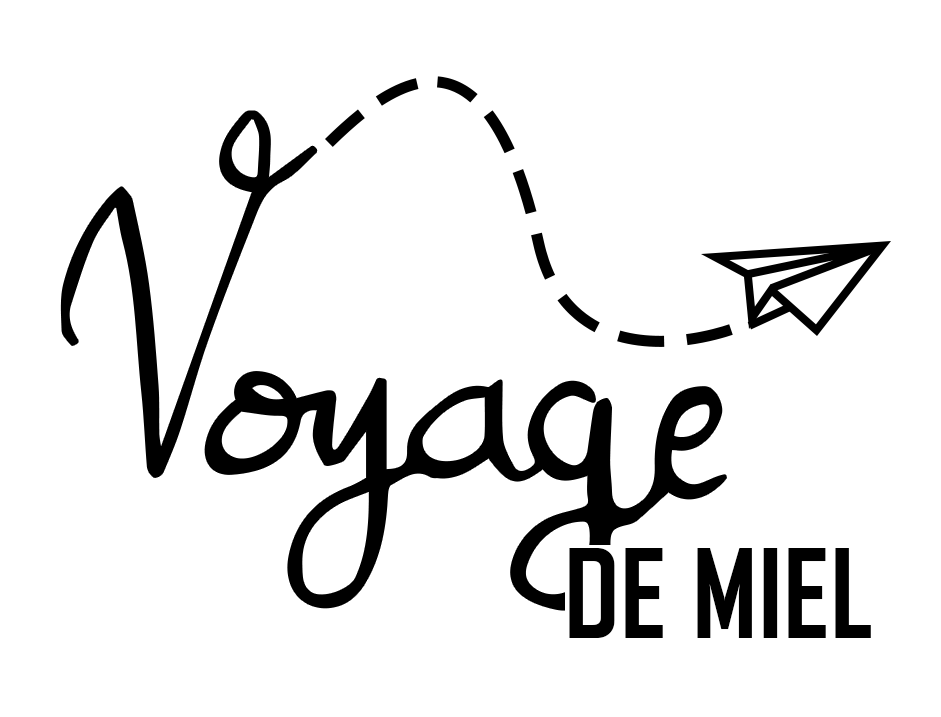
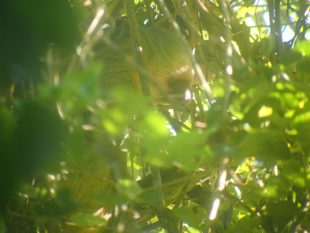
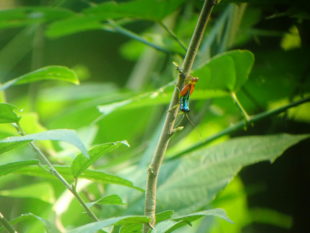
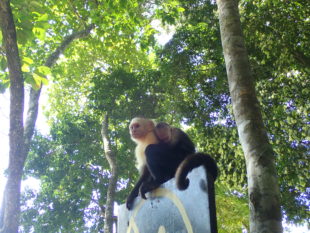
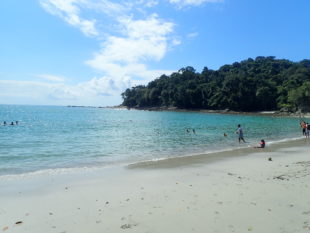
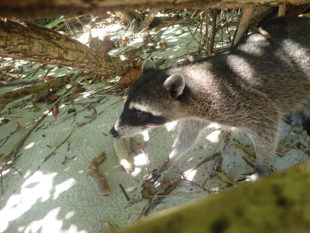
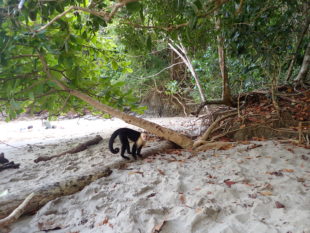
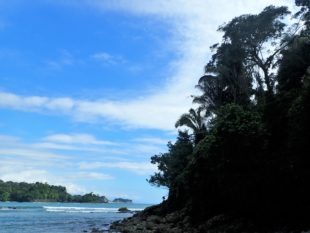
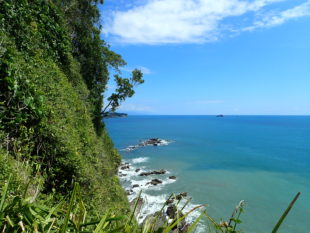
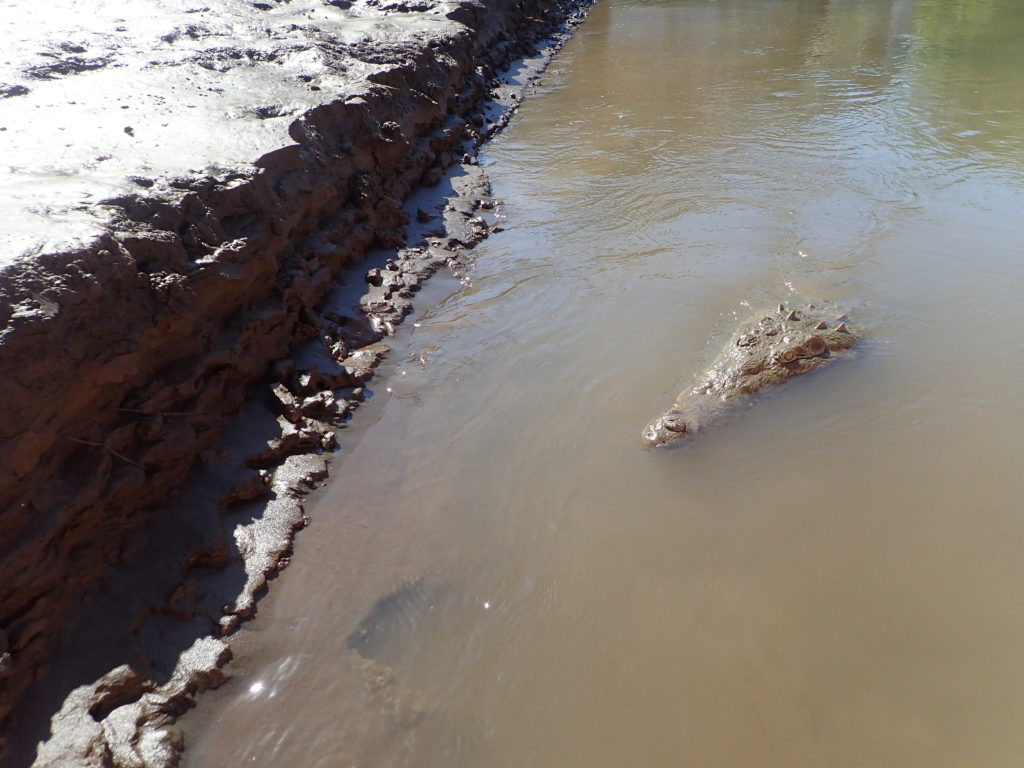
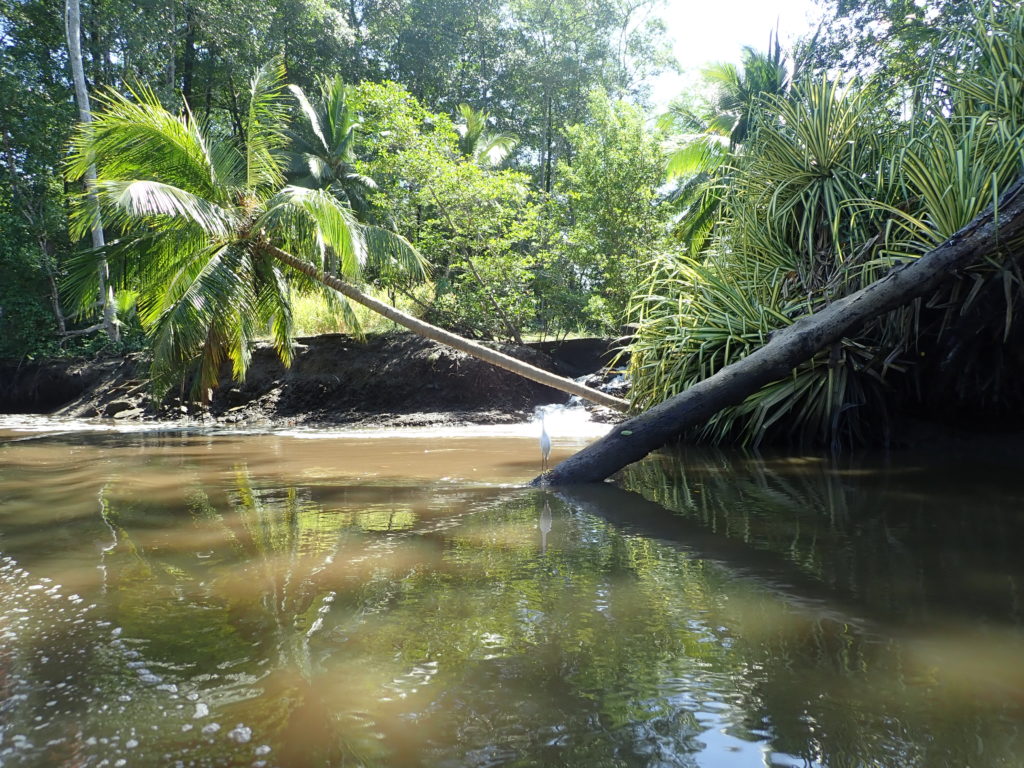
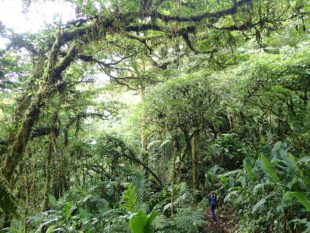
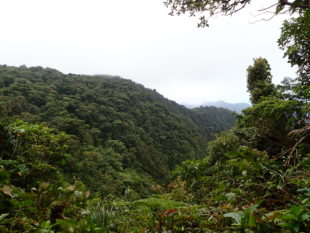
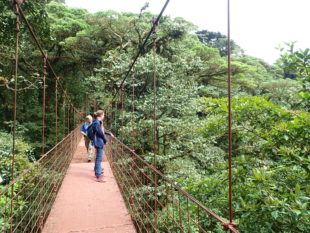
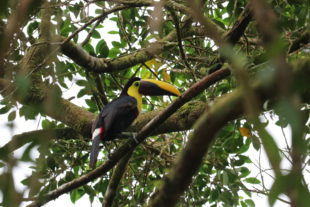
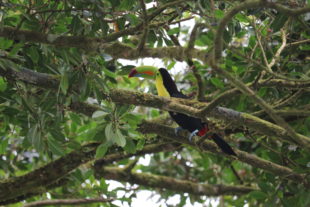
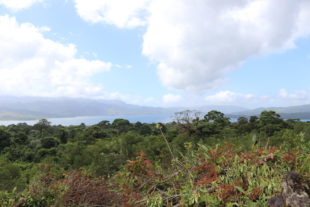
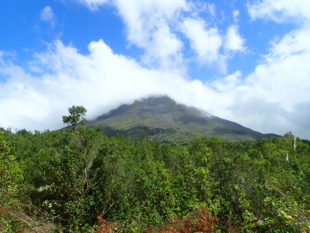
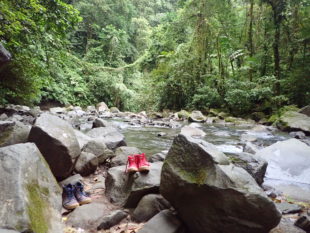
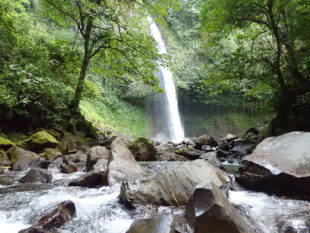
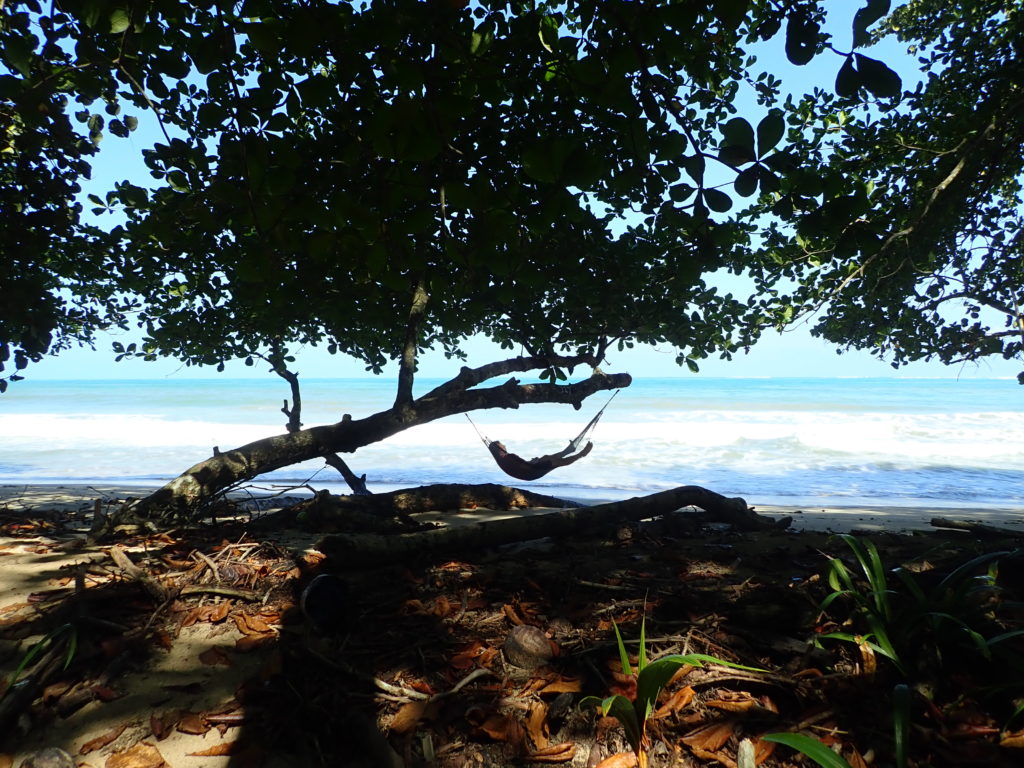
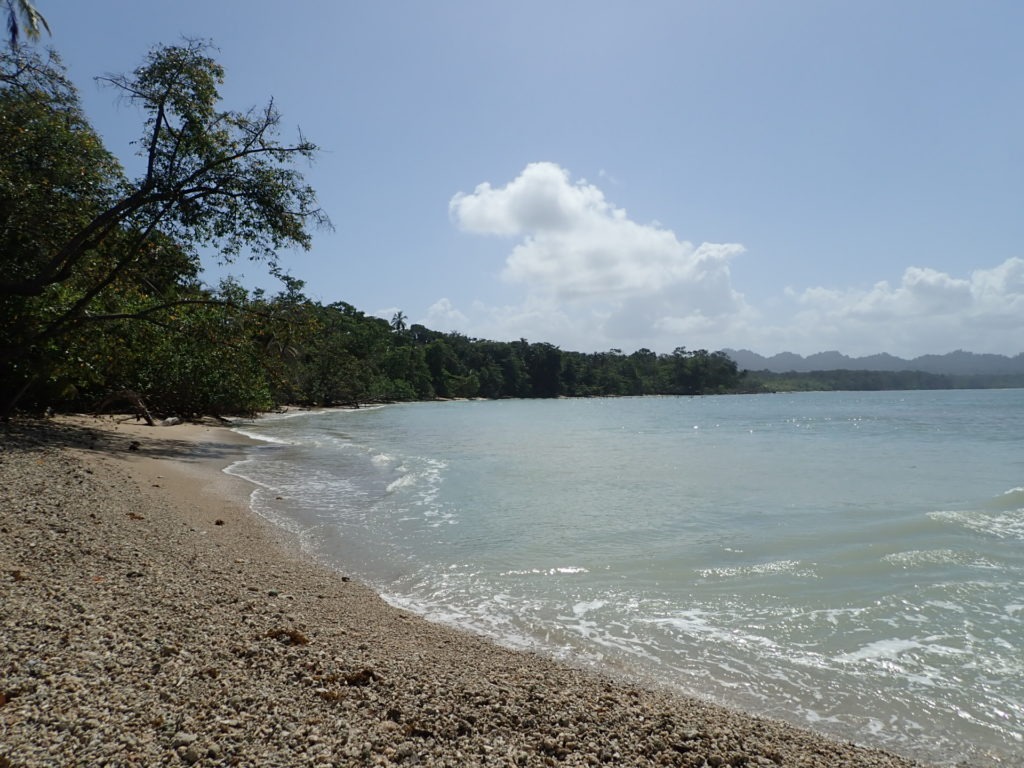
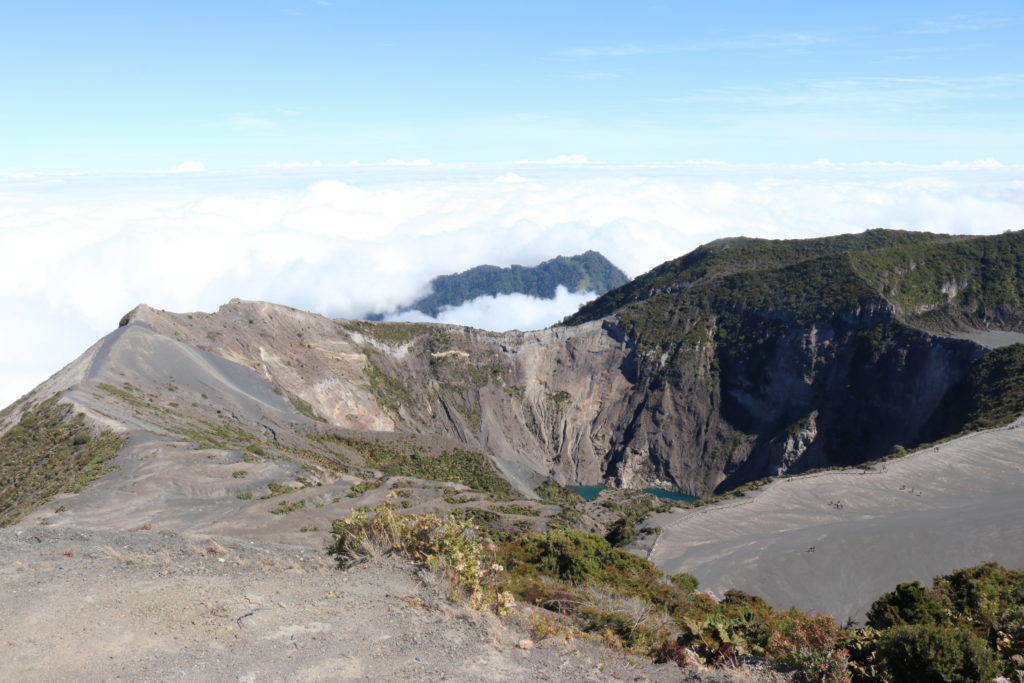
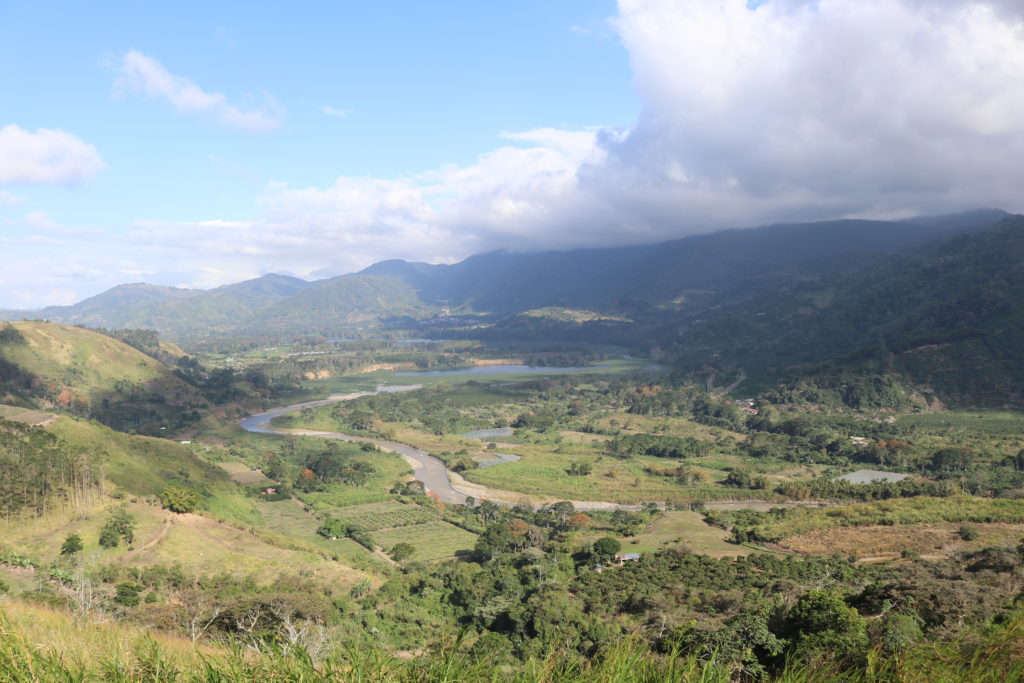
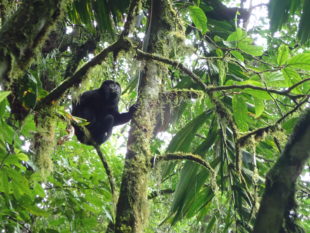
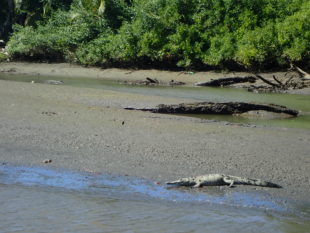
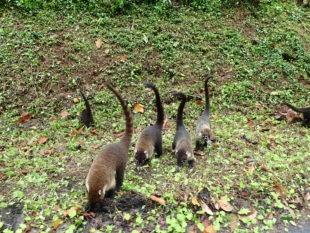
5 Comments
David from travelscams.org
May 16, 2019 @ 09:14
Very nice, thanks for sharing! This is a good and detailed road trip itinerary for Costa Rica.
Sporty Travellers
October 28, 2019 @ 07:25
Thank you for sharing. I’ll use some of your content to prepare our own road trip to Costa Rica in a couple of months.
Voyage de miel
October 28, 2019 @ 11:23
This is amazing, thanks for letting us know! Please let us know if you have any question and tell us after your trip if you have any additional tips to share 🙂
J’Nay Transue
January 25, 2020 @ 05:33
Thank you so much for sharing your trip with us. A couple questions if you don’t mind, around how much per person for 12 days? Also did you guys plan everything out before? Like where to stay and what y’all were going to do? My husband and I are planning a 2 week vacation in May (for our 3rd anniversary and his 42nd birthday) and are seriously considering doing a trip similar to what you guys did. Unlesssssss you have another idea of a good place that has good weather in May.
Thanks again and happy/safe travels
Voyage de miel
January 27, 2020 @ 10:26
Hello, thank you so much for reading our article and taking the time to leave us a comment !
Because we were in Costa Rica around Christmas and New Year Eve we rented the car and booked the accomodation before getting there (also we were 4 people travelling together). I would recommend doing it for the most touristic places you want to visit, but I imagine you will always find something last minute. We found Costa Rica to be more expensive than the other countries we visited in Central America but we do recommend visiting if you love widlife and beautiful landscapes. Mexico and Belize are also incredible options with more diving spots on the barrier reef and historical places to visit. Mexico will definitly be the cheappest out of the three. Pretty much everywhere we have been would have good weather in May, check out our other blog articles and let us know if you have questions on other destinations 🙂 Many thanks, we wish you the most amazing trip for your anniversary!